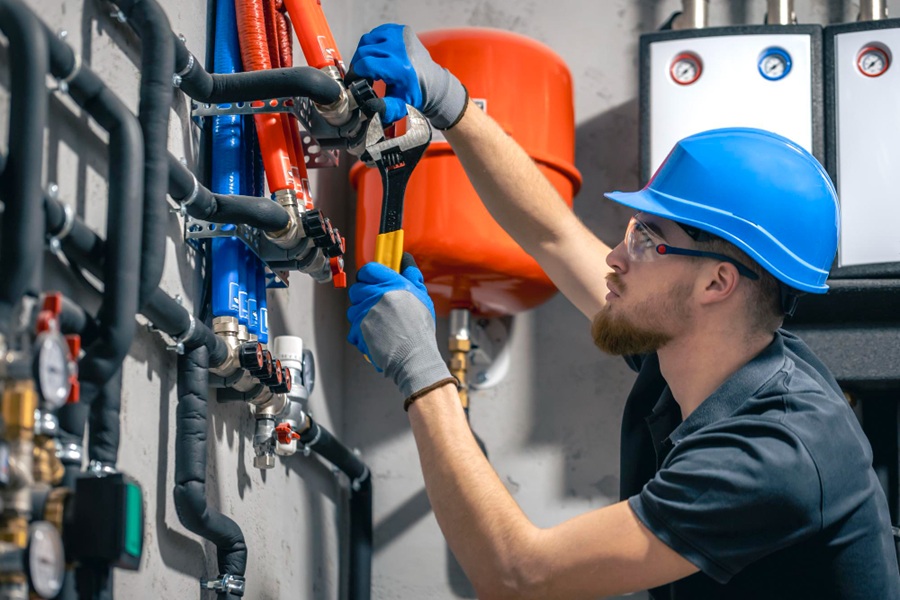Managing a multi-unit residential building comes with many responsibilities, and among them, controlling utility expenses is one of the most pressing. Water usage, in particular, can represent a significant portion of monthly operating costs for property managers. When water is bundled into rent or split evenly among tenants, it often leads to wasteful usage and unfair billing. One of the most practical ways to tackle this issue is through apartment water submetering.
Water submetering is a system that installs individual water meters for each apartment unit within a larger complex. This allows property managers to measure and bill tenants for the actual amount of water they use. The implementation of a water sub meter for apartments gives property managers more control, accountability, and clarity—benefits that quickly translate into reduced utility costs and more efficient building operations.
The Hidden Cost of Shared Water Usage
In buildings without submeters, tenants typically pay for water as part of their rent or through a flat utility fee. While this system may seem convenient, it creates a situation where there’s no direct link between usage and cost. Tenants have little incentive to conserve water because they don’t see the immediate financial impact of their consumption.
This arrangement often leads to excessive water use, unnoticed leaks, and a general lack of awareness about water conservation. For property managers, this means higher monthly bills, unpredictable utility expenses, and, in many cases, disputes over charges that feel unfair to responsible tenants.
Why Submetering Works
Installing a water sub meter for apartments solves many of these challenges by giving each tenant responsibility for their own water usage. When people are billed based on what they use, they naturally become more aware and more conservative in their habits. Turning off the tap when brushing teeth, fixing drips promptly, or running only full loads in the dishwasher becomes more common when people know their water habits directly affect their monthly expenses.
From a management perspective, this means total building consumption typically decreases, bringing down the water bill for the entire property. Submetering not only promotes fairness but also fosters an environment of accountability that benefits everyone.
Direct Financial Benefits for Property Managers
Reducing overall water use in a building immediately cuts utility costs, which can add up to substantial savings over time. For large properties, these savings can run into thousands of dollars annually. Submetering also allows property managers to pass water costs directly to tenants instead of absorbing them in the rent. This not only reduces operational expenses but also makes rent pricing more competitive and transparent.
Moreover, with a water sub meter for apartments, property managers gain insight into consumption trends and can detect anomalies. If a particular unit suddenly shows a sharp increase in usage, it could indicate a hidden leak or running toilet—issues that, if addressed early, can prevent expensive repairs and water waste.
Easier Budgeting and Predictable Expenses
Another major advantage of submetering is predictability. Utility bills can fluctuate due to tenant behavior, seasonal changes, and building inefficiencies. When property managers are responsible for the full cost, these fluctuations make budgeting difficult. Submetering stabilizes the budget by shifting water responsibility to tenants and minimizing surprise overages.
This not only helps with internal planning but also provides peace of mind. Knowing that tenants are directly managing their water usage gives managers one less unpredictable variable in their operations.
Simplified Tenant Disputes and Billing Clarity
Water usage disputes are not uncommon in buildings without submeters. Tenants may question flat-rate charges or argue over fairness when water is bundled into rent. Submetering eliminates these issues by providing transparent, itemized billing.
Modern water sub meters for apartments often come with digital tracking tools that allow tenants and property managers to view real-time data. This visibility improves trust between both parties and streamlines the billing process.
Boosting Property Value and Tenant Satisfaction
Beyond immediate savings, submetering can also increase a property’s long-term value. Buildings equipped with individual unit metering are seen as more efficient and forward-thinking. In a competitive rental market, this added layer of transparency and fairness can be an attractive feature for environmentally conscious tenants.
It also helps foster tenant satisfaction. When people feel they are paying only for what they use, and they can easily track their consumption, they’re more likely to feel respected and empowered—qualities that translate into longer leases and fewer complaints.
A Step Toward Sustainability
Sustainability is becoming a key factor in modern property management. Municipalities are tightening water usage regulations, and tenants are paying more attention to eco-friendly living. Implementing a water sub meter for apartments supports both regulatory compliance and environmental goals.
By encouraging lower consumption and helping detect leaks early, submetering aligns with green initiatives and can support certifications or incentives for eco-conscious building management.
Getting Started with Submetering
For property managers considering water submetering, the first step is a building assessment. Not all structures are plumbed in a way that easily allows for individual unit meters, but with modern technology and retrofitting options, many buildings can still adopt submetering with minimal disruption.
Working with a professional submetering service provider ensures accurate installation, ongoing data management, and integration with your existing billing systems. It’s also important to communicate clearly with tenants, outlining the benefits and providing support during the transition.
Conclusion
Water submetering is more than just a way to track usage—it’s a practical strategy that empowers property managers to reduce utility costs, promote conservation, and create a more transparent relationship with tenants. By implementing a water sub meter for apartments, managers can take control of one of their most unpredictable expenses, enhance operational efficiency, and contribute to a more sustainable future.
Whether you manage a small complex or a large residential community, investing in submetering is a smart move that pays dividends in cost savings, tenant satisfaction, and overall property value.








Leave a Reply